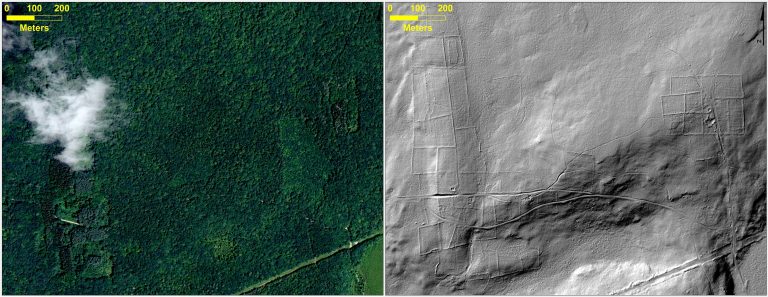A bit belated, but still relevant because tonight is the men’s final and tomorrow the women’s! Go Huskies!
From the US Census Bureau:
2014 NCAA Men’s Final Four: April 5-7
The NCAA Final Four men’s college basketball games will be played April 5 and April 7 at AT&T Stadium in Arlington, Texas. Sometimes known as March Madness or the Big Dance, the NCAA Division I Men’s Basketball Tournament has grown from an eight-team tournament in 1939 to a 68-team, single-elimination playoff with mass appeal. The semifinals and championship games are each expecting more than 100,000 fans, and about 15 million viewers are expected to watch each game on TV. To commemorate this occasion, the Census Bureau has compiled a collection of facts examining the demographics of the host city, as well as the cities represented by the four remaining teams — Madison, Wis. (University of Wisconsin), Gainesville, Fla. (University of Florida), Storrs, Conn. (University of Connecticut) and Lexington-Fayette, Ky. (University of Kentucky).
Game Trends
7
Out of the past 10 national championship games, the school from the city with a smaller population has won seven times (70 percent). Source: QuickFacts, Population Estimates and NCAA <http://quickfacts.census.gov/qfd/index.html>, <http://www.ncaa.com/final-four>
50%
Out of the past 10 years of national semifinal games, the school from the city with a smaller population has won half (10 out of 20) of the games. Source: QuickFacts, Population Estimates and NCAA <http://quickfacts.census.gov/qfd/index.html>, <http://www.ncaa.com/final-four>
Arlington, Texas (Home of AT&T Stadium, site of the Men’s Final Four)
Population: 375,600
Median household income: $53,341
Percentage completed high school or higher (25 and older): 84.2%
Percentage bachelor’s degree or higher (25 and older): 28.7%
Source: QuickFacts <http://quickfacts.census.gov/qfd/states/48/4804000.html>
Gainesville, Fla. (Home of the University of Florida Gators)
Population: 126,047
Median household income: $32,145
Percentage completed high school or higher (25 and older): 90.9%
Percentage bachelor’s degree or higher (25 and older): 43.7%
Source: QuickFacts <http://quickfacts.census.gov/qfd/states/12/1225175.html>
Storrs, Connecticut (Home of the University of Connecticut Huskies)
Population: 14,031
Median household income: $34,924
Percentage completed high school or higher (25 and older): 95.0%
Percentage bachelor’s degree or higher (25 and older): 49.4%
Source: QuickFacts and 2008-2012 American Community Survey <http://quickfacts.census.gov/qfd/states/09/0973980.html> <http://factfinder2.census.gov/faces/tableservices/jsf/pages/productview.xhtml?pid=ACS_12_5YR_B01003&prodType=table>
Madison, Wis.(Home of the University of Wisconsin Badgers)
Population: 240,323
Median household income: $53,958
Percentage completed high school or higher (25 and older): 94.8%
Percentage bachelor’s degree or higher (25 and older): 53.3%
Source: QuickFacts <http://quickfacts.census.gov/qfd/states/55/5548000.html>
Lexington-Fayette, Ky.(Home of the University of Kentucky Wildcats)
Population: 305,489
Median household income: $48,779
Percentage completed high school or higher (25 and older): 88.7%
Percentage bachelor’s degree or higher (25 and older): 39.9%
Source: QuickFacts <http://quickfacts.census.gov/qfd/states/21/2146027.html>
2014 NCAA Women’s Final Four: April 6-8
The NCAA Final Four women’s college basketball games will be played April 6 and April 8 at Bridgestone Arena in Nashville, Tenn. The NCAA Division I Women’s Basketball Tournament has been held annually since 1982; it was one of 12 women’s sports added to the NCAA championship program for the 1981-82 school year. Since 2003, the championship game has been played on the Tuesday following Monday’s men’s championship game. To commemorate this occasion, the Census Bureau has compiled a collection of facts examining the demographics of the host city, as well as the “college towns” associated with the four remaining teams — Storrs, Conn. (University of Connecticut); South Bend, Ind. (University of Notre Dame); Palo Alto, Calif. (Stanford University); and College Park, Md. (University of Maryland).
Nashville-Davidson, Tenn. (Home of Bridgestone Arena, site of the Women’s Final Four)
Population: 624,496
Median household income: $45,982
Percentage completed high school or higher (25 and older): 85.6%
Percentage bachelor’s degree or higher (25 and older): 34.3%
Source: Census Bureau QuickFacts and 2008-2012 American Community Survey
<http://quickfacts.census.gov/qfd/states/47/4752006.html>
Storrs, Conn.(Home of the University of Connecticut Huskies)
Population: 15,344
Median household income: $34,924
Percentage completed high school or higher (25 and older): 95.0%
Percentage bachelor’s degree or higher (25 and older): 49.4%
Source: Census Bureau QuickFacts and 2008-2012 American Community Survey
<http://quickfacts.census.gov/qfd/states/09/0973980.html>
South Bend, Ind.(Home of the University of Notre Dame Fighting Irish)
Population: 100,800
Median household income: $34,182
Percentage completed high school or higher (25 and older): 84.2%
Percentage bachelor’s degree or higher (25 and older): 22.8%
Source: Census Bureau QuickFacts and 2008-2012 American Community Survey
<http://quickfacts.census.gov/qfd/states/18/1871000.html>
(Note: The University of Notre Dame is technically located in unincorporated Notre Dame, Ind., CDP (census-designated place), which is adjacent to South Bend. Notre Dame, Ind., had a population of 5,973; according to the 2008-2012 American Community Survey, it had a median household income of $21,250; 96.0 percent had a high school diploma or higher; and 73.5 percent had a bachelor’s degree or more. Sources for Notre Dame CDP: Census Bureau QuickFacts <http://quickfacts.census.gov/qfd/states/18/1855386.html>
Palo Alto, Calif.(Home of the Stanford University Cardinal)
Population: 66,363
Median household income: $122,482
Percentage completed high school or higher (25 and older): 97.6%
Percentage bachelor’s degree or higher (25 and older): 79.5%
Source: Census Bureau QuickFacts and 2008-2012 American Community Survey
http://quickfacts.census.gov/qfd/states/06/0655282.html
(Note: Most of Stanford University is located in the unincorporated Stanford, Calif., CDP, adjacent to Palo Alto. Stanford, Calif., had a population of 13,809; according to the 2008-2012 American Community Survey, it had a median household income of $55,299; 99.0 percent had a high school diploma or higher; and 92.3 percent had a bachelor’s degree or more.
Source for Stanford, CDP: Census Bureau QuickFacts: <http://quickfacts.census.gov/qfd/states/06/0673906.html>
College Park, Md. (Home of the University of Maryland Terrapins)
Population: 31,208
Median household income: $60,402
Percentage completed high school or higher (25 and older): 88.6%
Percentage bachelor’s degree or higher (25 and older): 49.0
Source: Census Bureau QuickFacts and 2008-2012 American Community Survey
<http://quickfacts.census.gov/qfd/states/24/2418750.html>
 From the US Census Bureau:
From the US Census Bureau:


